DCAW: Highlighting Contemporary Sensibilities
Delhi Contemporary Art Week (DCAW), which is a curated forum that draws upon the synergies between seven like-minded galleries in the city, who have been promoting contemporary art consistently and are committed to the vision of coming together to educate, showcase and promote Contemporary Art. This edition of DCAW presents an impactful curation of artworks by the seven participating galleries – all of them, coincidentally, helmed by women. The 5th edition of DCAW showcases a stellar line up of curated events, talks, workshops, and walkthroughs.
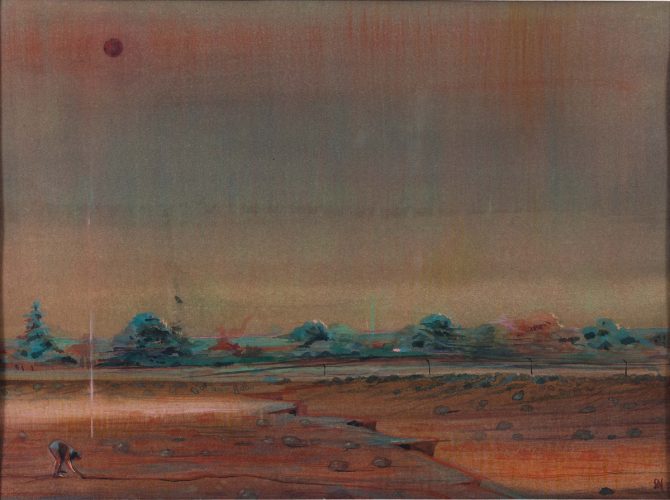
Contemporary Art in South Asia is grabbing its fair bit of attention, nationally as well as globally. In Delhi it’s the union of the galleries that have created a unified powerhouse where art and culture can be enjoyed, under one roof. They are showcasing a new wave of artists from India and the sub-continent. The participating Galleries are Blueprint 12, Exhibit 320, Gallery Espace, Latitude 28, Nature Morte, Shrine Empire and Vadehra Art Gallery.
Gallery Espace
Helmed by Renu Modi, since the 1980s Gallery Espace has been known to promote both the Moderns and the Contemporaries. Growing from a small corporate boardroom in New Friends Colony to sleek three tiered gallery, Espace is one of the respected names in the art business. Mrs Modi opines that DCAW has become a fixture in the city’s cultural calendar. “I think it’s partly because the smaller format and the central venue of the event make it so accessible to visitors from across the NCR,” she says. For this 5th edition of DCAW Espace features work by Amit Ambalal, Dilip Chobisa, GR Iranna, Ishita Chakraborty, Mekhala Bahl, Nandini Bagla, Chirimar, Paula Sengupta, Rashmi Mala, Shambhavi, Tanmoy Samanta and Valay Gada. They present a selection of works by 11 artists who include Amit Ambalal, to Rashmi Mala, who has recently signed on with Espace. Mala’s delicate botanical drawings take from her archival research into colonial and pre-modern illustrations. Eclecticism is the leitmotif of Mekhala Bahl’s canvases, while Tanmoy Samanta’s evocative gouache-on-rice paper captures broken, flawed objects and emotive landscapes. Shambhavi’s luminous ghataks are inspired by the couplets of poet Kabir.
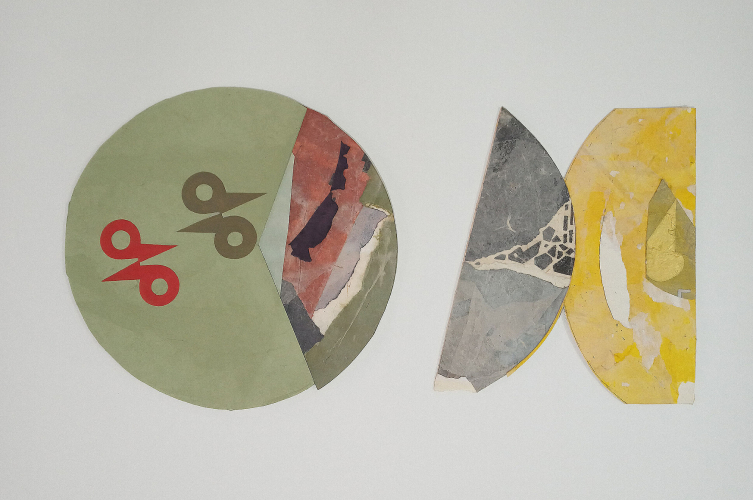
Exhibit 320
Rasika Kajaria has mentored many young cutting edge artists at her gallery Exhibit 320, a young gallery that showcases contemporary art, creating a platform for new thoughts and ideas. The participating artists include Kumaresan Selvaraj, Sumakshi Singh ,Gopi Gajwani, Sonali Sonam, Yasmin Jahan Nupur, Harish Ojha, Rahul Kumar, Suryakant Swain, and Gunjan Kumar.

The large works displayed by Selvaraj were arresting as they brought to the fore his past reflections with nature as he creates visuals that unscramble information and also throws up the question of containment. Selvaraj dissects the ‘nature of memories’ that are singularly fragile but that which collectively reinforce our personalities.
Sumakshi Singh’s works consist of layered lace drawings. Through them we experience memoirs of her childhood. ‘In The Garden’ brings together a new body of work by Singh that continues an exploration of ideas situated in the way we experience reality.
Sonali Sonam’s works are influenced by the miniature style, but with a modern twist. She investigates the natural world in urban settings. Yasmin Jahan Nupur is an artist born and based in Chittagong, Bangladesh. Her visual and performance work is influenced by the ecological and community driven aspects of life.
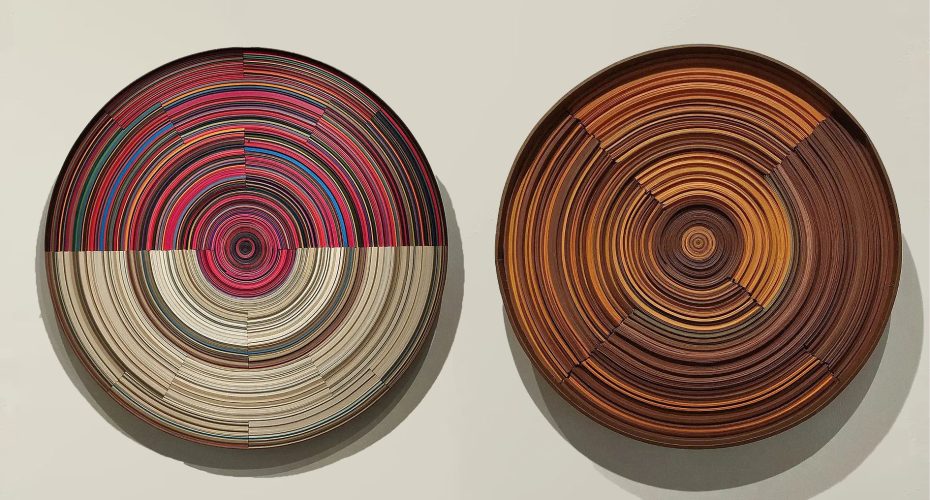
Harish Ojha’s current works are based on his experiences of growing up in a rural agrarian family. His works reflect his propensity to be drawn to Indian painting traditions with its decorative flourishes.
Suryakanta Swain is a migrant from a rural village in Odisha, to the metro city of Delhi. He witnessed a transition that created a sense of rootlessness in his new urban life.
Gunjan Kumar is an artist, independent scholar and educator based in Chicago originally from Punjab, India. She has spent many years traveling through India and other countries in South Asia, observing age-old practices in textiles and indigenous arts and crafts, which her work reflects.

Blueprint 12
Founded by Mandiraa Lambba and Riddhi Bhalla in 2012, Blueprint12’s objectives are inspired by the pillars of transparency and collaboration. ‘Kaimurai’ is the identity through which Abishek Ganesh J expresses his art and research practice. His work is a dialogue between organic forms and flow of energy experienced in the Western Ghats and Ancient South Indian art. He captures raw energy and inherent vibration that is omnipresent but buried by daily chaos. Madhu Das’ practice is an ongoing excavation and investigation on the ideas around trauma, anxiety and belief connected to geography, community, or an individual persona intrigued by the way cultural and political factors influence one’s life.
Mansha Chhatwal is an ardent reader hence her works are focused on the destructive act of book-burning as a way of looking at our past and recent history. Her work engages with issues of censorship, power, identity, memory and loss through stories of books, writers and libraries. Aditi Anuj works with origami. Her work constantly challenges her to take risks, be it with the complexity of the fold, the scale of the final piece, or the medium itself. It excites her to promote her origami art globally.
Bakula Nayak has the cornerstone of her art practice based on sensitive storytelling. Nayak weaves together her personal histories with those of others by layering ancient and contemporary literature.
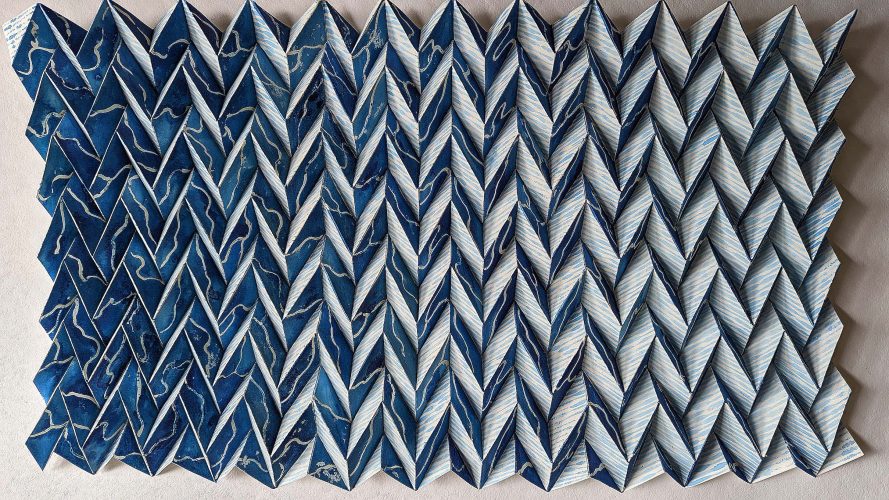
Latitude 28
Bhavna Kakar is the Founding Director of TAKE on Art and Latitude 28, a gallery for contemporary arts and ideas, one of the primary venues to support emerging artists.
“DCAW has been instrumental in bringing forth a roster of young talented voices in the art. In this year’s edition, LATITUDE 28 brings together South Asian artists experimenting with mediums to create works that are diverse and innovative,” says Kakar.
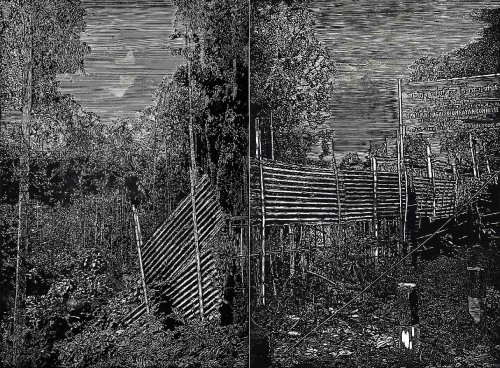
The artists featured at DCAW are Ahalya Rajendran, Anupama Alias, Chandan Bez Baruah, Gopa Trivedi, Jyoti Bhatt, Ketaki Sarpotdar, Khadim Ali, Noor Ali Chagani, Shalina Vichitra, Shubham Kumar, Sudipta Das, Waseem Ahmed, Waswo X. Waswo, Yogesh Ramkrishna and Zahra Yazdani.

While Ahalya Rajendran’s paintings have moved from drawings of daily observations of agrarian life to her urban surroundings, it brings to light issues of contemplation and execution. Alias focuses on depicting women at a transitional and vulnerable time in their lives. Baruah uses his digital photographs as references for the woodcut prints, sensitively working with a postmodern approach towards landscape. Bhatt, a senior artist who documents traditional Indian craft and design work, stemmed from a request to photograph Gujarati folk as a comment on their loss of their tribal traditions.

Trivedi’s sensibilities are rooted in the Indian Miniaturist traditions, where she attempts to re-infuse and often re-contextualize miniature with contemporary new media methodology. Khadim Ali’s works are rooted in conflict zones in south, southwest and central Asia, after having fled Afghanistan which continues to feature in his work. This year’s DCAW was specially commissioned and reflective of the current political situation in Afghanistan.
The other galleries featured at DCAW are Nature Morte, Vadehra Art and Shrine Empire.
Text by Georgina Maddox
Images Courtesy: Blueprint 12, Exhibit 320, Gallery Espace, Latitude 28 and Artists
Find more about DCAW:
https://indiaartfair.in/programme/delhi-contemporary-art-week-2022





